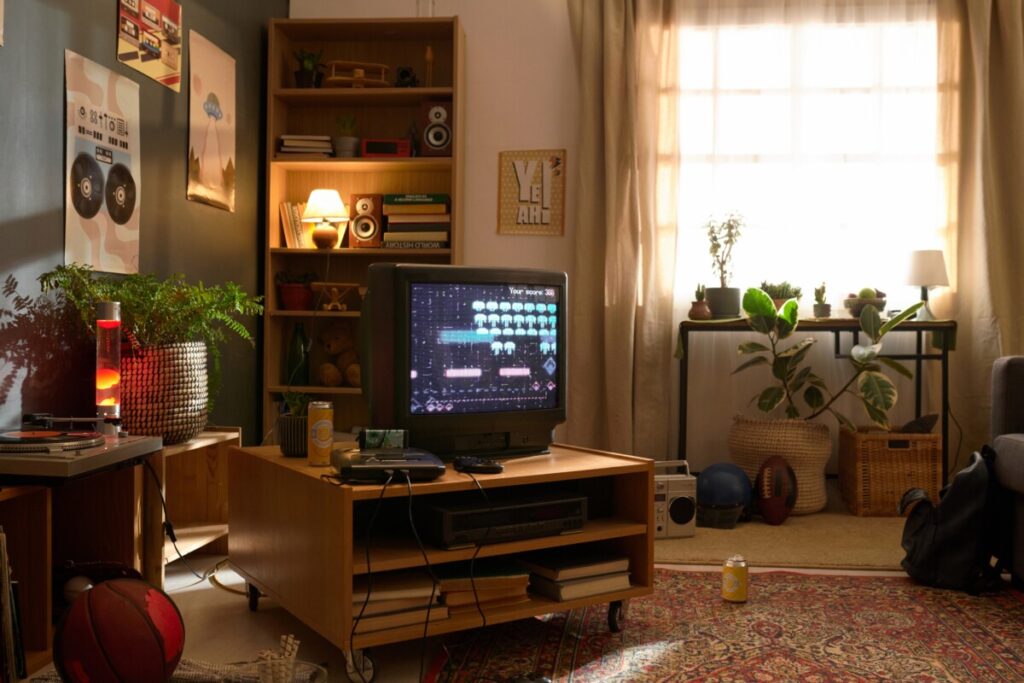Reviving 90s Decor Trends: A Modern Approach to Nostalgic Design
Bringing back the simplicity and functionality of 90s interior design with a contemporary twist has become a popular trend. Neutral tones, clean lines, and functional staples from that era are being reimagined to create timeless and refined spaces.
The 1990s and 2000s were characterized by open layouts, neutral palettes, and a focus on livability. Features like white or beige walls, shaker-style cabinets, and subway tile backsplashes were common, emphasizing practicality with a touch of sophistication.
Design experts are now incorporating elements from the past into modern homes, blending nostalgia with contemporary aesthetics to create inviting and stylish interiors. Here are some key insights from industry professionals on how to modernize 90s design:
1. Modernizing the Open Floor Plan
Mark O’Krafka from Team O’Krafka suggests updating the open-concept floor plan with modern lighting, neutral tones, and layered textures. Stainless steel appliances and sleek cabinetry from the 90s have evolved into timeless elements that add sophistication to any space.
2. Floral Wallpaper and Brass Accents
Elizabeth & Lindsay of Dwell October recommend using bold floral wallpaper to add personality to small spaces, paired with wainscoting or shiplap for a modern twist. Polished brass fixtures bring warmth and elegance, especially when combined with other metal finishes.
3. Embracing Comfort and Functionality
Laura Howett from Minimal in Design emphasizes incorporating neutral palettes, open-concept living, and a focus on comfort and functionality inspired by 90s design. The era’s lasting impact on design is evident in the emphasis on practical yet aesthetically pleasing spaces.
4. Creating Cozy, Flexible Spaces
Jimmy Welch of The Jimmy Welch Team appreciates the practicality of 90s design, focusing on comfort and livability. The return to defined spaces and natural light, along with simple window treatments, creates inviting and functional environments.
5. Blending Minimalism with Sustainable Design
Justin Landis from Justin Landis Group combines modern elements like stainless steel appliances with natural textures and light colors for a timeless and eco-friendly design. Open-concept living, smart tech, and sustainable materials enhance the overall appeal of the space.

6. Earthy Neutrals with Modern Contrast
Nitya Seth of Nityanamya suggests using earthy neutral palettes layered with textured decor for a contemporary yet cozy feel. Incorporating glossy finishes and futuristic shapes in moderation adds visual interest and a modern touch to the space.
7. Updating 90s Design Staples
Magda Callery of Style by Magda believes in modernizing 90s design elements by softening lines, updating materials, and adding texture for a fresh look. Balancing beige-on-beige with texture, defining open floor plans, and mixing metals create a harmonious and updated space.
8. Giving New Life to Existing Spaces
Melody Stevens of Design on a Dime Interiors appreciates the shift towards open floor plans and earthy palettes in 90s design. By enhancing existing features with better materials and textures, old spaces can be revitalized to suit modern lifestyles.
9. Balancing Minimalism with Intention
Adam Hicks, CEO of CooperBuild, combines clean lines and open layouts from the late 90s with warm earth tones and quality materials for a contemporary yet inviting ambiance. Updating the minimal vibe with craftsmanship and detail adds depth and character to the space.
10. The Resurgence of Wallpaper
Andrea Thompson of Drea Design Services explains how wallpaper has made a comeback, offering endless creative possibilities and adding a wow factor to any room. Embracing bold designs and murals, wallpaper has become a defining element in modern interior design.

